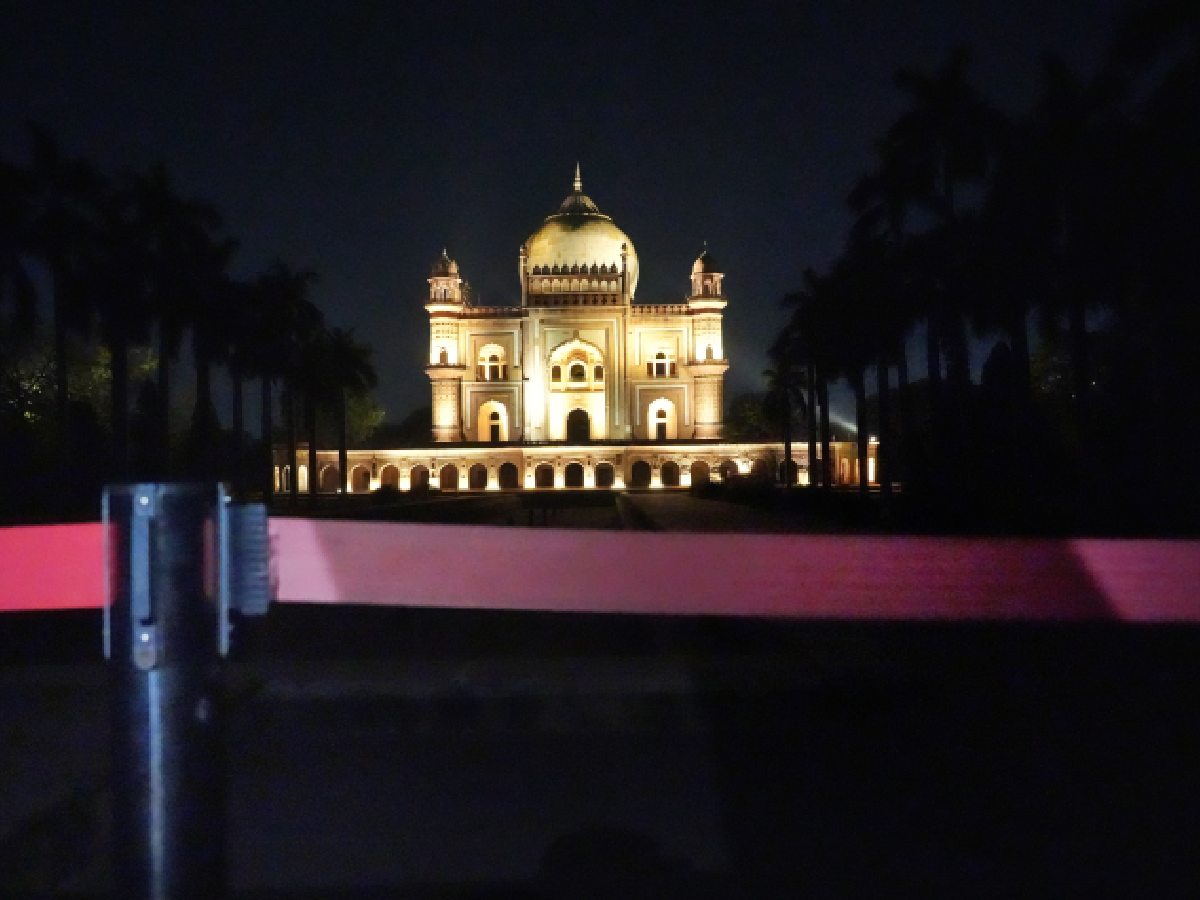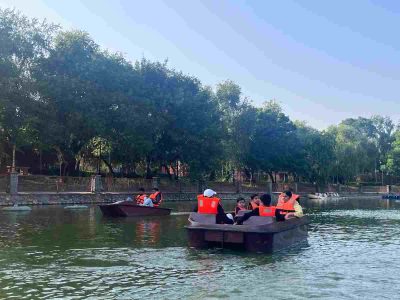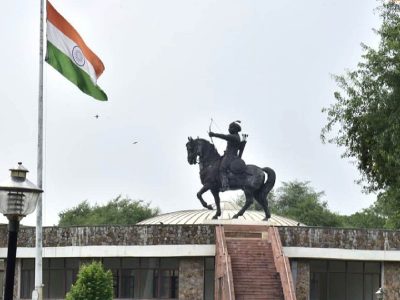It was a balmy evening in Delhi, and the cool night breeze offered a welcome respite from the day’s heat. Beneath a sky dotted with stars, groups of visitors— both locals and tourists—gathered around the iconic Humayun’s Tomb and Safdarjung Tomb, eager to experience a new initiative touted as the future of Indian tourism: night tourism.
The Archaeological Survey of India (ASI) recently extended visiting hours for Humayun’s Tomb and Safdarjung Tomb until 9 PM, promoting the opportunity to witness these architectural marvels bathed in the glow of artful illumination. However, for many, the experience fell short of expectations.
Also read: Purana Qila’s light and sound show delayed amid revamp plans
Barriers over access
As the clock neared 7 PM, the initial excitement among visitors turned to frustration. Instead of being allowed to explore the tombs, they found themselves halted by barricades, unable to get close. The illuminated structures stood just out of reach, visible only from a distance.
“What’s the point of keeping the monument open till night if we can’t get close or enter?” asked Subhash Kumar, a visitor from Uttar Pradesh who had recently visited Humayun’s Tomb.
“They’ve illuminated the monument, but we’re just looking at it from a distance.
What kind of night tourism is this?” said Anjali Arora from Karol Bagh, echoing the sentiment of many.
Security personnel stood by, politely but firmly reminding everyone that the tombs could not be entered during these hours or even approached closely. “This is for safety and preservation purposes,” they explained.
Unmet expectations
As the evening wore on, visitors began voicing their concerns more openly.
“This is not what I imagined when I heard about night tourism,” said Dalbir Singh, an elderly visitor from Mumbai, shaking his head. “I thought we’d be allowed to walk through the tombs, see the artwork, and explore the spaces. Instead, they’ve put up these barriers. The lights are pretty, but they don’t tell the story of these places. They’re nothing but glittering facades.”
Many others lamented the missed opportunity. “Why bother coming here at night if you can’t go inside?” remarked Pooja Verman and Aniket Singh, a couple from Gurgaon. “We could have come during the day. I didn’t find coming here at night worthwhile.”
While some visitors tried to make the best of it—capturing photos of the illuminated structures from afar—others sat on nearby benches, waiting for a moment when the barricades might open. That moment never came.
Ticketing woes add to frustration
A few visitors also raised concerns about ticketing. “After 6 PM, their ticketing counters shut. If they’re promoting night tourism, they should keep the counters open until 9 PM,” said Jaspreet Kaur, a visitor who works in a corporate firm in Gurgaon.
Kaur added, “Although they have an online booking system, it’s a hassle. It asks for your name, ID proof, and number, which feels like an unnecessary exercise.”
Also read: ASI shelves plan to introduce cultural events, facilities at Safdarjung Tomb
Low footfall raises concerns
ASI has been making efforts to promote night tourism at Delhi’s monuments by introducing new facilities, organising light-and-sound shows, and illuminating heritage structures. However, footfall suggests that these initiatives have yet to gain traction.
Official records accessed by Patriot show that only about 35 visitors visit Safdarjung Tomb each week in the evening—a stark contrast to the 350 visitors it receives daily. At Humayun’s Tomb, just 20-25 visitors come at night, compared to over 500 during the day.
An official from ASI’s Delhi Circle acknowledged the challenges but maintained that the initiative was a work in progress.
Regarding the issue of restricted access at night, the official explained, “This is for the safety of the monument to prevent any damage in the dark.”
The way forward
While ASI’s night tourism initiative has been positioned as a way to enhance visitor experiences, many believe that simply illuminating monuments will not be enough. Unless tourists are allowed closer access and logistical concerns such as ticketing are addressed, night tourism in Delhi may continue to struggle to attract visitors.




